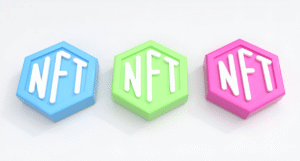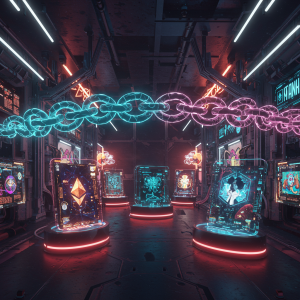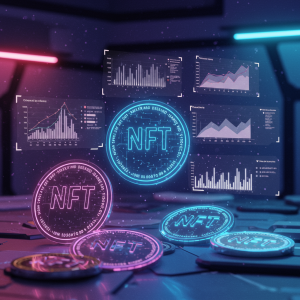Cross-chain NFT Compatibility: Breaking Down Ecosystem Barriers

The non-fungible token landscape has experienced remarkable growth, yet remains fragmented across numerous blockchain networks. This compartmentalization has created isolated ecosystems where assets remain confined to their native chains. As the digital collectible market matures, cross-chain compatibility emerges as perhaps the most consequential development for widespread NFT adoption and utility. This evolution promises to reshape how we conceive of digital ownership in fundamental ways.
The Current Fragmentation Challenge
Today’s NFT market resembles a series of independent islands rather than a connected continent. Digital assets minted on Ethereum cannot natively interact with those on Solana, Flow, or Tezos. This isolation forces collectors to maintain multiple wallets across different networks, juggle various currencies, and navigate entirely separate marketplaces—creating significant friction in the user experience.
For creators, this fragmentation means choosing a single ecosystem often represents a strategic trade-off. Selecting Ethereum provides access to established liquidity and collector bases but comes with higher transaction costs. Opting for alternative networks might offer better economics but potentially smaller audiences. The inability to span multiple chains constrains both creative and commercial possibilities.
Meanwhile, developers building NFT-powered applications face considerable challenges when attempting to incorporate assets from diverse blockchains. This limitation restricts innovation and hampers the development of truly comprehensive digital experiences.
The Movement Toward Interoperability
The pressing need for seamless asset movement between blockchains has catalyzed significant technological innovation. Several approaches have emerged to address this fundamental challenge:
Bridge Protocols
Bridge technologies establish connections between otherwise separate blockchain networks. These systems typically lock assets on their original chain while minting representative versions on destination chains. Despite their utility, bridges represent imperfect solutions, introducing additional security considerations and trust requirements. The Wormhole protocol represents one prominent example, facilitating token transfers between Ethereum, Solana, and other major networks.
Wrapped Assets
Wrapping allows non-native assets to function on different blockchains through tokenized representations. For instance, an NFT originally minted on Ethereum might be “wrapped” to create a usable version on Binance Smart Chain. While functional, this approach adds complexity and often requires intermediary tokens.
Layer-Zero Protocols
More ambitious solutions seek to create foundational infrastructure operating beneath existing blockchains. These protocols aim to establish universal communication standards that allow seamless interaction between otherwise incompatible networks. Such approaches potentially offer more elegant solutions but require widespread adoption to achieve their full potential.
Real-World Applications Emerging
The theoretical benefits of cross-chain compatibility are materializing in practical applications that demonstrate its transformative potential:
Multi-Chain Marketplaces
New generation NFT marketplaces now showcase and trade assets from multiple blockchains within unified interfaces. These platforms allow collectors to browse comprehensive collections regardless of the underlying blockchain technology. The user experience increasingly resembles traditional e-commerce rather than specialized crypto interactions.
At NFTMarketo, we’ve witnessed firsthand how cross-chain compatibility enhances the collector experience. Our analysis indicates that platforms supporting multiple blockchains typically demonstrate higher engagement metrics and stronger retention compared to single-chain alternatives.
Cross-Chain Gaming Economies
Gaming represents perhaps the most compelling use case for cross-chain NFT compatibility. Game developers now design experiences where items minted on various networks can interact within unified virtual environments. Players might use Ethereum-based characters alongside Solana-based accessories and Polygon-based land parcels, creating richly interoperable metaverse experiences.
Identity and Reputation Systems
Digital identity systems built on NFT technology benefit tremendously from cross-chain functionality. Users can maintain consistent identities across diverse applications without remaining tethered to single blockchain ecosystems. This flexibility enhances both utility and adoption potential for decentralized identity solutions.
Technical Challenges and Evolving Solutions
Despite promising progress, achieving seamless cross-chain NFT compatibility involves overcoming significant technical hurdles:
Standard Reconciliation
Different blockchains implement NFT standards with varying specifications. Ethereum’s ERC-721 and ERC-1155 standards differ from Flow’s NFT standard or Solana’s SPL token approach. Creating universal translation mechanisms requires addressing these fundamental differences in how assets are defined and tracked.
Metadata Consistency
NFT metadata—the information that gives tokens meaning beyond their blockchain entries—presents particular challenges when moving between ecosystems. Ensuring images, attributes, and associated media remain consistent across chains demands robust solutions for decentralized storage and verification.
Security Considerations
Cross-chain interactions introduce additional attack vectors that must be carefully managed. Bridge protocols especially have proven vulnerable to exploitation, with several high-profile security incidents highlighting the risks involved in connecting otherwise separate systems. The Chainlink oracle network has become instrumental in providing secure data transfer between blockchains, helping mitigate some of these concerns.
The Path Forward
The evolution toward truly seamless cross-chain NFT compatibility continues gathering momentum through several complementary developments:
Standardization Efforts
Industry collaborations increasingly focus on establishing common standards for cross-chain communication. These initiatives aim to create frameworks that different blockchain projects can implement to ensure native compatibility rather than requiring aftermarket solutions.
Abstraction Layers
Emerging wallet and marketplace technologies now shield users from underlying complexity through abstraction layers. These interfaces manage the technical aspects of cross-chain interaction behind intuitive user experiences, making blockchain boundaries increasingly invisible to end users.
Shared Security Models
Novel approaches to blockchain architecture explore shared security models where multiple chains can leverage the security properties of established networks. These arrangements potentially enable greater interoperability without compromising the fundamental trust guarantees that make blockchain valuable.
Conclusion
Cross-chain NFT compatibility represents much more than a technical curiosity—it stands as an essential evolution for the digital asset ecosystem. By breaking down artificial barriers between blockchain networks, this functionality promises to deliver the seamless experience necessary for mainstream adoption while preserving the unique advantages of specialized chains.
For creators, the ability to reach audiences across multiple ecosystems without duplicating efforts removes significant constraints on creative and commercial potential. For collectors, the freedom to acquire and utilize assets regardless of their native blockchain dramatically enhances convenience and utility. For developers, the capacity to incorporate diverse digital assets into unified applications enables previously impossible experiences.
The journey toward complete cross-chain compatibility continues, with significant challenges remaining. However, the direction is clear: the future of NFTs transcends individual blockchain boundaries in favor of unified digital asset ecosystems where technical distinctions fade into the background, leaving only value and utility in focus.








